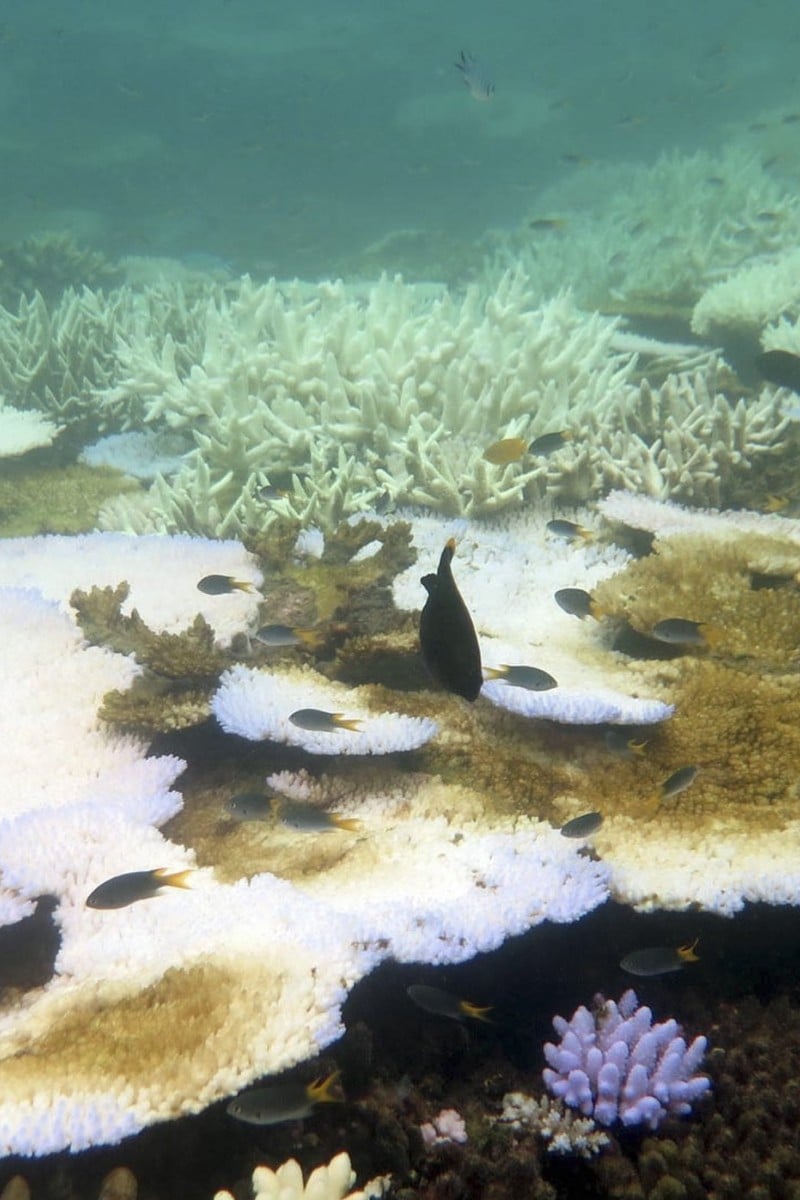
What are coral reefs and why are they at risk?
The biggest threats these beautiful underwater ecosystems are pollution, overfishing, coastal development, and climate change
 Coral reefs that are damaged will appear bleached or whiter in colour.
Coral reefs that are damaged will appear bleached or whiter in colour.What are coral reefs?
Coral reefs are underwater ecosystems that form in tropical waters. Corals are made up of tiny living organisms called coral polyps, which attach themselves to the sea floor. When polyps die, they become hard, and new polyps grow on top of them. Gradually, over thousands of years, these layers form a coral reef.
Polyps feed on other organisms, like plankton and algae. The algae is what gives coral its beautiful colours. But algae is usually only found close to the surface of the water, as it gets its energy from the sun. This is why coral reefs form in shallow, clear waters close to the coastline. Corals also need warm water to survive, so you’ll only find them in tropical regions, near the equator.
One of the biggest and best-known coral reefs is the Great Barrier Reef in Australia, which is around 2,300 kilometres long. It is so big that it can be seen from space.
Why are they important?
Coral reefs only cover 0.1 per cent of our oceans, but they support 25 per cent of all marine life. This makes them one of the most important marine biomes on the planet. As well as being filled with beauty and diversity, coral reefs are useful to humans. They provide millions of people with food. They also act as barriers which protect the shoreline from waves, storms and floods, keeping people safe and preventing property damage or coastal erosion.
Lesson plan: What is a coral reef?
Who depends on them?
Coral reefs are often referred to as the “rainforests of the ocean”, because they are full of life. Many animals, like sponges, starfish, and clams, attach themselves to reefs, covering them almost entirely. Thousands of species of fish, from clownfish and puffer fish to eels and reef sharks, also call the reef home, while plant species include various types of sea grass and seaweed.
According to some estimates, as many as 1 billion humans also rely on coral reefs for food or to make a living. Because reefs support so much marine life, they tend to be the main source of food for coastal and island communities. They also draw in a lot of tourism, and local economies depend on the income this generates. A 2002 study estimated the value of coral reefs at US$10 billion - although their value extends far beyond dollars and cents.
Why are they at risk?
The biggest threats to coral reefs are pollution, overfishing, coastal development, and climate change. Coral reefs need clean, clear water. When pollutants enter the water, they smother reefs, preventing them from getting enough sunlight. They also speed up the growth of certain algae which damage reefs.
Overfishing causes the numbers of many key species - such as those which eat the damaging algae - to drop. Some types of fish traps also damage coral when they land on it. In addition, many fish breed and nurse their young in reefs, so targeting these areas for fishing kills lots of young fish before they have had a chance to reproduce.
Coastal development - such as the construction of roads, hotels, and restaurants for tourism - causes more waste and pollutants to enter the water, while tourists can also damage coral just by touching it.
Climate change is also a major factor. Warming waters cause the colourful algae that live in coral to leave, turning the coral white. This doesn’t kill the coral, but it makes it a lot more vulnerable. In recent years, coral bleaching has affected every coral reef on Earth. The Great Barrier Reef suffered the worst bleaching events in recorded history in 2016 and 2017. It is thought to have lost around half of its coral.
Because coral reefs grow so slowly, they are disintegrating faster than they can be repaired. About half the world’s shallow water coral reefs have already disappeared.
How can we protect them?
Large-scale initiatives to combat climate change, like the 2015 Paris Accord, may help to reduce the risk of such severe coral bleaching events in the future. But smaller-scale initiatives, like the banning of destructive fishing gear, and a shift towards sustainable tourism and fishing, are also vital for keeping coral reefs healthy.
Last year, hundreds of governments, private companies, non-government organisations and local communities pledged their support for a new action plan to protect ocean biodiversity. It is an important step which will tackle the threats to coral reefs from different angles and at both a community and global level.
As individuals, we can do our bit by adopting ocean-friendly habits, such as using less plastic, following sustainable seafood guides, and choosing eco-certified travel operators.
